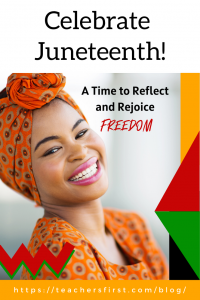Though slavery technically ended with the Emancipation Proclamation on January 1, 1863 and the Civil War effectively ended April 9, 1865, the announcement of the end of slavery did not reach Texas until June 19, 1865. On that day, General Gordon Granger rode into Galveston, Texas, and announced that slavery had ended and that all slaves were free. Since then, June 19 has been celebrated as Juneteenth. Juneteenth— also known as Jubilee Day, Freedom Day, and Cel-Liberation Day—is a recognized and celebrated holiday in all but three states, but legislators have yet to designate it as a national holiday. The original celebration became an annual one in 1866. Juneteenth will even be celebrated virtually this year.
 Primary sources associated with Juneteenth can be an effective way to garner interest in the topic. The Library of Congress offers a variety of primary sources related to Juneteenth, including activities for younger students and interviews with former slaves about celebrations and reactions to the news. Pictures of celebrations and documents related to the holiday from local historical societies are an excellent starting point for lessons about analyzing primary sources.
Primary sources associated with Juneteenth can be an effective way to garner interest in the topic. The Library of Congress offers a variety of primary sources related to Juneteenth, including activities for younger students and interviews with former slaves about celebrations and reactions to the news. Pictures of celebrations and documents related to the holiday from local historical societies are an excellent starting point for lessons about analyzing primary sources.
Teaching about Juneteenth today makes it relevant to students who might not otherwise ever learn about it. Acknowledging and teaching American history, even the hard parts, is a powerful tool in our classrooms. There are many Juneteenth teaching tools, including lesson plans, activities, and resources for various ages—from elementary to high school and in between—that connect to multiple subjects. Try Juneteenth trivia as an engaging entry into your lesson.
However you plan to teach Juneteenth, your lesson will provide an amazing look into a seldom explored area of African American culture. Check out these resources and blog posts from TeachersFirst® for more African American history teaching resources!
(This post was updated February 2022)

